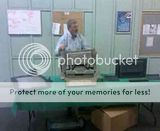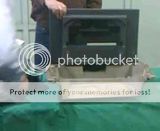raybonz
Minister of Fire
VCBurner said:jharkin said:VCBurner said:The only thing that worries me about the Encores and Defiants is that they don't come with a cat probe thermometer. Mine has a probe and it really helps to see what's going on with the cat.
Condar makes a probe that can be used on these stoves. Its the one with the remote digital readout.
On another note - Is there any talk that VC might upgrade replacement parts for the older stoves to be made from this new improved refractory ?
Thanks for the reply J,
I think it should be a standard item just like mine. Too many people have probably burned out their cats and refrectory housing on their Defiant Encores, Defiants and Encore Cat stoves due to having no idea how hot the stove is or the cat is. The manual only states that thermometers are helpfull and recommended. They should be required with these stoves! I think VC would be saving money if they made it a standard issue! Most stove owners don't have a clue how hot their stoves really are, and don't care about overfiring them until they can't overburn them anymore: cracked, warped parts, huge repair bills, etc...
As far as the replacement parts for their older stoves, I was wondering the same thing. They would probably benefit from using the new materials as they seem to be more durable and cost effective. I would also benefit from this, as I have a used Defiant Encore Cat coming in a couple of weeks.
Take care,
Chris
Chris you certainly are the VCBurner! I love how they look and look forward to your experiences with it.. I would not hesitate to buy the 2461 stove you own now as I feel they will last a very long time and require little in the way of part replacement.. BTW my cat should be here today and yours probably will be too.. Good luck with that as I feel we got a great deal!
Ray



